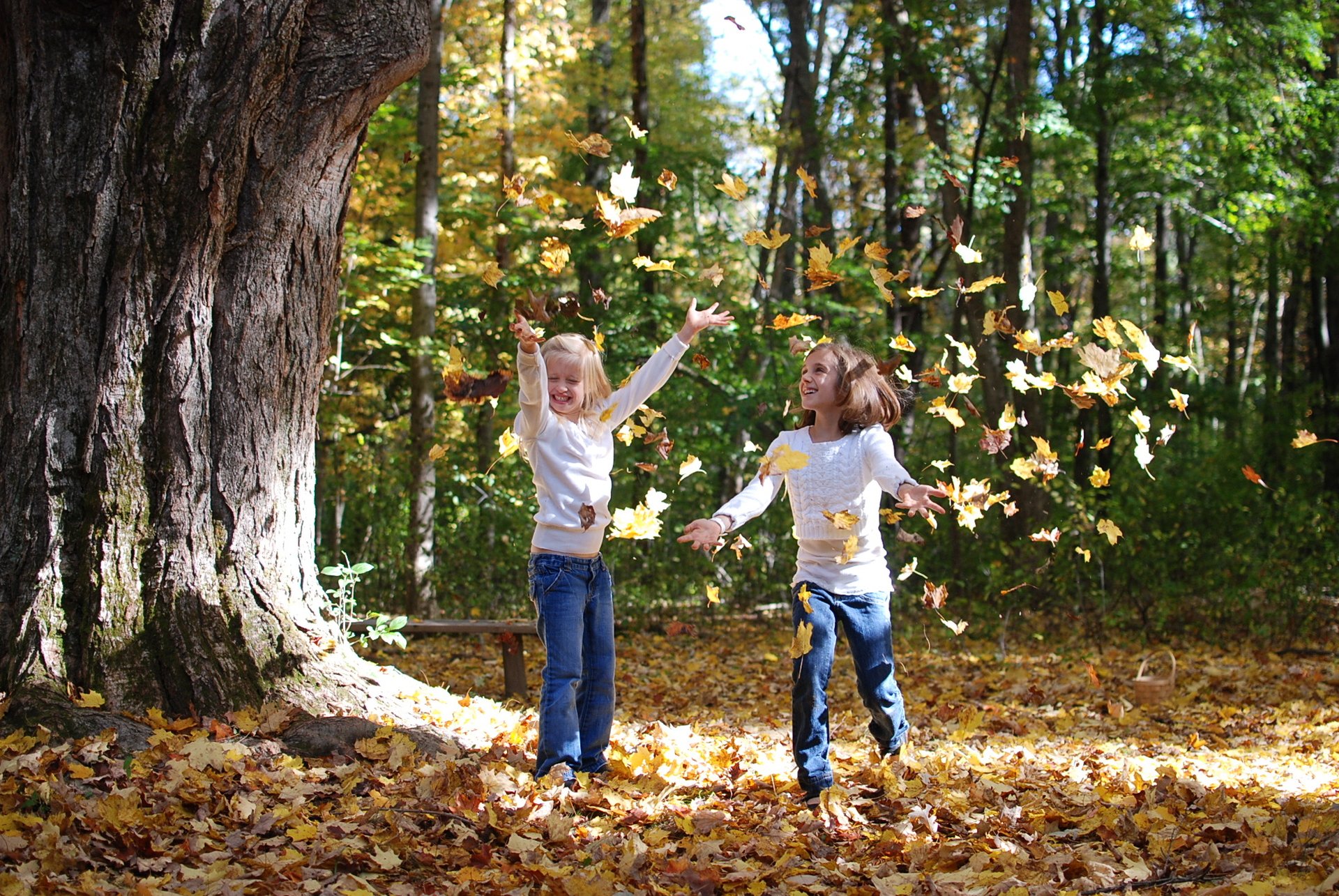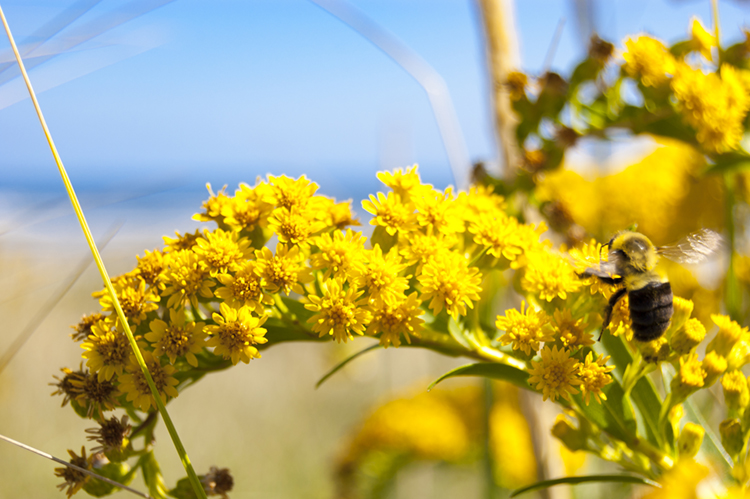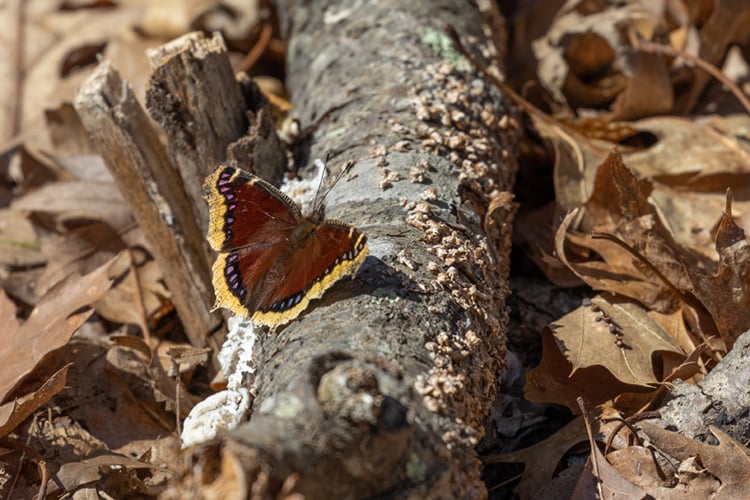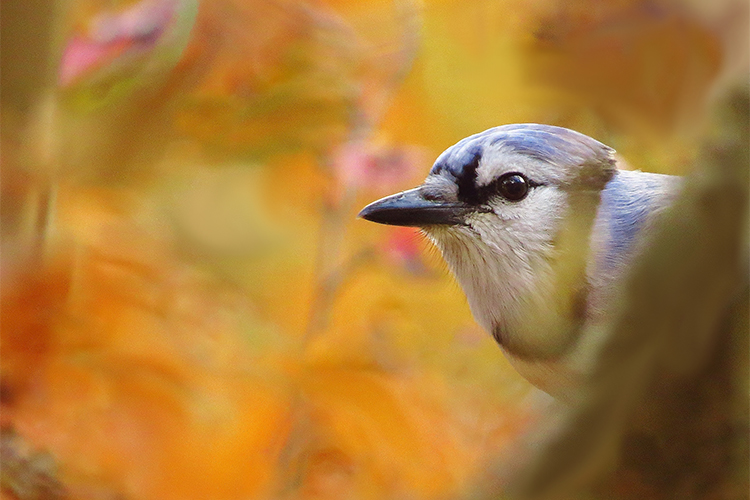Skip the Autumn Cleanup
October 01, 2022
Fall is here, and with it comes cooler temperatures and that nagging feeling to pick up that dreaded rake and garden clippers for the annual autumn cleanup. Well, we’ve got good news: you’re officially off the hook.
Not only will your back thank you, so will our native pollinators and wildlife who rely on leaf litter for food, shelter, and to help them survive winter. If you can’t forgo raking altogether, here are three reasons why you should consider keeping some patches of leaf litter around the yard until spring.
Reason #1 - Long Live the Queen Bee
Common Eastern Bumble Bee colonies don’t let cool weather slow them down. Unlike many other species, bumble bees work and produce young queens well into autumn. These queens fly off to mate while the colony continues to work until the first hard frost, when they die.
Meanwhile, the young queens mate and then survive the winter in the ground under leftover leaf litter until the warmer days of spring, when they will emerge to start new hives. To help the bees, leave the deep leaf litter around the bases of trees, shrubs, and perennial plants for the queens to snuggle into.
Reason #2 - Butterflies (Don’t) Fly Away
When you bag and throw leaves away, you’re tossing out precious beneficial insect larvae and eggs, too. The vast majority of butterfly and moth species don’t migrate (Monarchs are a well-known exception), but rather overwinter in leaf litter. The familiar Woolly Bear caterpillar, the larval form of the Isabella Tiger Moth best known for “predicting” how mild or harsh winter will be, is one example that needs the leaves. The fuzzy brown and black caterpillars wriggle between old plant stems, flowers, grass, and leaves until spring.
Others, such as the Mourning Cloak, can overwinter as adult butterflies. They rely on “antifreeze” chemicals in their blood to spend the winter in a sheltered place, such as in rock crevices, under bark, or in a woodpile. They emerge on warm days, sometimes as early as February, and treat us to flashes of spring with their graceful flutters.
Reason #3 - Don’t Forget the Birds
Living near an oak tree can mean a pileup of acorns. Squirrels and chipmunks aren’t the only ones who store these nuts— Wild Turkey, Wood Duck, American Crow, and Blue Jay also eat acorns. Throughout the fall, a Blue Jay can bury up to 5,000 acorns, up to a mile away from the tree. While you’re leaving the acorns be, keep twigs, grass, and plant fibers as they lay, too. American Robins can easily gather them to build a nest in the spring. Robins need plenty of structural material like twigs and bark to build a sturdy home and also insulate it with grass and mud.
Halt the Cleanup
So, feel free to put off or limit raking, or skip the fall cleanup altogether—as it turns out, it’s one of the most valuable things you can do to protect and help our native pollinators and wildlife thrive. Come spring, hold off any cleaning efforts until mid-April or when daytime temperatures are consistently 50°F. This is warm enough for most of our native insects to have emerged from their winter shelters.






